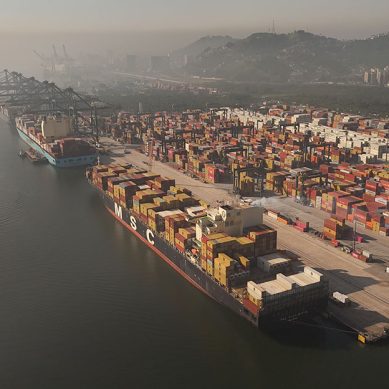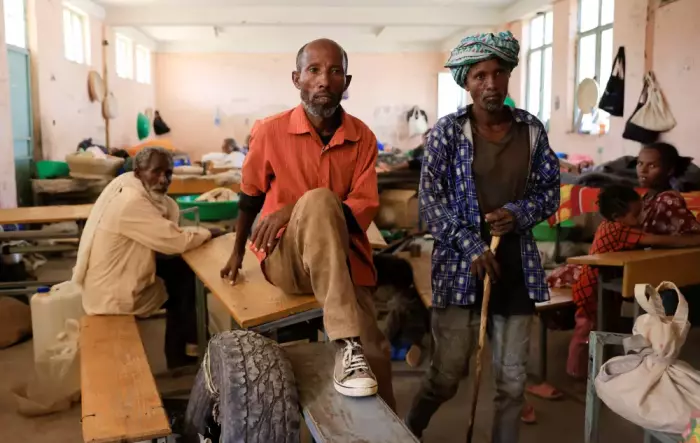
Rwanda provided Yoweri Museveni with a very intriguing field in which to drive his yellow bus and take in passengers. By the time the Rwanda Patriotic Front (RPF) invaded Rwanda from Uganda the English speaking imperialist countries (the US and Britain) had been wracking their heads trying to find a way of clipping the wings of France.
There are more French speaking countries than English speaking ones in Africa. Beyond the number, France has been very meticulous in keeping close to its former colonies close to it. This has given France immense leverage at forums like the United Nations where France, despite being economically less endowed than the United States and Britain, wielded immense influence.
This situation has been a serious irritation to the English speaking imperialist countries. In his highly revealing book, Waren Madsen tells us how on his first trip to Africa in 1996, the US Secretary of State, Warren Christopher admonished France for treating Africa as its “private domain”. This statement by Warren Christopher had been presaged by similar comments by the US Commerce Secretary, Brown, who on a visit to Dakar in 1995 had declared that the US will no longer concede African markets to traditional colonial powers. Brown was clearly referring to France.
In the circumstances, Museveni found himself in a situation where he could pay back the Anglo-Saxon imperialists for the support they had lent him as well as shore up for further support. He did this by assisting the two imperialist powers gain a foothold in Rwanda.
The second aspect of Rwanda, which attracted Museveni’s yellow bus, was the Tutsi question. Ever since the 1959 revolution that ousted the Tutsis from power and sent a sizeable portion of them into exile, the Tutsis have aspired to get back to power and those in exile to go back to Rwanda. There is a strong belief in certain circles that Museveni is himself a Tutsi. Whether this belief is true or not may be immaterial; for if you take him to be just a Muhima, you will find an affinity between Museveni and the Tutsis.
Not only are the Tutsis and Bahima related, they are both formerly dominant identities and because of that, are bound to assist each other. Beyond that or because of it, the Tutsi exiles in Uganda fought alongside Museveni in his so-called war of liberation.
This is how Museveni justified his intervention in Rwanda: “In Rwanda, therefore, the Belgians succeeded in dividing the people right from 1959, with a sectarian leader, Kayibanda, organising a sectarian party, known as Pare-muhutu – the party of the Bahutu. I have never found out why the Belgians were not satisfied with dividing the people. The Belgian army, using helicopters, “Kakoma-nkongye”, was attacking the Tutsi civilians and the poor people had to flee to Uganda, Tanzania, Burundi, Congo and beyond. If what the Belgians wanted for their puppets in Rwanda was political power, it has never been clear to me why they had to massacre the Tutsis.
It seems thousands were massacred and that was what caused the people to flee. One of my maternal uncles, Maherero, was working as a clerk {karant) at Kabezi Sub-county at that very time. I heard him relating those stories of massacres to my father in 1959/60. I was 15 years at that time and was able to follow everything. Kabezi Sub-county includes Kiziinga, a part of Ankole that is next to the border. Then the Belgians started putting out stories that there had been a “Social Revolution” – “revolution social” – in Rwanda. Total nonsense! What were the contradictions in that situation? A revolution aims to resolve antagonistic and irreconcilable contradictions. There were certainly no irreconcilable contradictions between the ordinary Tutsis and ordinary Hima. There could have been some parasitic relations between the Bainginya, the ruling clan, on the one hand and the ordinary Bahima and Batutsi on the other hand. If that was the case, then the situation did not need a sectarian Pare-muhutu organisation but a patriotic Hutu-Tutsi organisation to fight for the rights of all the Banyarwanda against the parasites.
What, therefore, happened in Rwanda was not a social revolution but a genocide and ethnic cleansing phase I, done by the Belgians and condoned by the UN. Anyway, it generated a Tutsi diaspora which, by the time we came on the scene in the early 1970s, had grown to one million out of a total population of seven million of Banyarwanda (Tutsi-Hutu, outside and inside Rwanda).” (
To grasp why the Tutsis combatants (RPF) first left Rwanda to which they went back by invading the country from Uganda, we need to realise that Rwanda is essentially a caste society.
There is the Tutsis who constitute the upper caste and the Hutus who make up the lower caste. To understand this caste system, we further need to go back into the history of Rwanda. Like the rest of sub-Saharan Africa, Rwanda got inhabited about 500 to 600 years ago – that is during the time of migrations in the sub-Saharan Africa.
The first people to arrive in the present day Rwanda and Burundi were/are Bantu speaking people whose cradle is supposed to be somewhere in West Africa, most probably present day Cameroon. These Bantu speaking people are the ones called Hutus today. They were and are agriculturists. The Tutsis were to arrive later. It is believed they came from around present day Ethiopia. Professor Lermarchand suggests “…their physical features suggest obvious ethnic affinities with the Galla tribes of Southern Ethiopia.”
The Tutsis are differentiated from the Hutus by their looks. They tend to be tall and thin like President Kagame. They also tend to have elongated noses. When they first arrived in Rwanda, they were pastoralists and are still predominantly pastoralists up to the present day. With their cattle and some rudimentary political organisation which the Hutus did not have, the Tutsis overawed the Hutus and established a monarchy as well as the caste system we referred to above in central Rwanda.
Professor Lermarchand tells us this nascent kingdom was to spread to most of present day Rwanda. In the 16th century, what is today the central region of Rwanda (namely Nduga-Marangara) was absorbed into the initial nuclear kingdom. Then in the 17th century, under the leadership of Umwami Rugazu Ndori, a series of invasions against formerly independent Hutu communities was mounted. These invasions resulted in the expansion of the kingdom. The climax of these expansions was to come in the later half of the 19th century during the reign of Mwami Kigeri Rwabugiri.
Rwabugiri’s reign is credited with a series of spectacular conquests and reforms. He is said to have been ruthless. It is said he led the Tutsis everywhere, providing them with opportunity to loot. We must however point out that that things were not always easy. This was particularly so in the northern regions occupied by the communities who saw themselves as Bakiga and where some sort of state systems had evolved. In those areas as well as in areas with natural obstacles, Tutsi incursions got slowed. Thus the annexation of the northern areas and eastern ‘marches’ could not be attained until the 1920s. It is also quite possible the annexation of these areas could have taken even longer had it not been for the military assistance of the Germans and later Belgians.
In 1884 Germany colonised Rwanda as part of its Rwanda-Urundi colony. Later, following Germany’s defeat in the first world war, Rwanda-Urundi was put under Belgian rule as a United Nations Trusteeship territory. Both colonial powers were to use the administrative structure of the Tutsis to run the colony through the rubric of indirect rule. By so doing colonialism reinforced Tutsis dominance. Colonialism also expanded the area of Tutsi domination. Colonialism, it should be remembered, was/is in essence the imposition of the capitalist mode of production.
About this imposition, two observations need to be made. One, the capitalist mode of production was not being imposed on a tabula rasa as there was another mode of production in place already: the tributary. The tributary mode of production, which was in place, took three forms: ubuhake, ubureetwa and ubutaka.
Ubuhake was a tributary system which involved cattle. In its true form this involved the transfer of a cow or cows from the patron to a client. The client partook of the milk. The client could also enjoy any benefit accruing from the cows offsprings such as using the bulls for ploughing. The other benefit to the client was use of the grazing land of the patron. However, the client was expected to call on his patron and while there carry out personal services for the patron. The demand for services of the client were not uniform.
Some clients worked as domestic help. Others went as far as taking beatings in place of their patrons if the patrons was due for punishment which required beatings. The relatively favoured clients performed less menial duties such as repairing the reed fence surrounding the patron’s homestead or carried the patron’s tobacco pouch and pipe as the patron went on visits or tours.
Ubureetwa was carried out by those whose lineage or who individually had not attained favoured status with the chiefs or some other powerful person. It was a residual category for the relatively powerless.
The second point that needs to be borne in mind is that in the initial period of its imposition, the capitalist mode of production does not have the wherewithal to operate. It therefore ‘subsumes the labour process as it finds it. It takes over an existing labour process, developed by different and more archaic modes of production…..the work may become more extensive, its duration may be extended, it may become more continuous or orderly under the eye of the interested capitalist, but in themselves these changes do not affect the character of the labour process, the actual mode of working.”
This is done through a process called articulation of modes of production. That is to say the modes of production which had been operating up to the point of colonisation are articulated to the incoming capitalist mode of production. This stems from a realisation “that capitalism can never immediately and totally eliminate the preceding modes of production, nor above all get rid of the relations of exploitation which characterise these modes of production.
On the contrary, during an entire period it must reinforce these relations of exploitation, since it is only this development which permits its own provisioning of good coming from those modes of production or with men driven from those modes of production and therefore compelled to sell their labour power to capitalism in order to survive.”
What we then have is a process which Charles Bettleheim captured very well when he said that the pre-capitalist modes of production are “both undermined and perpetuated at the same time in a process he called “conservation and dissolution”. The process of undermining and dissolving certain aspects of the pre-capitalist modes of production did lead to the eradication or transformation of both the ubuheke and the ubutaka tributes. While previously these payments were made in produce or labour, they were now to be made in monetary form. However, these changes did not affect ubureetwa. Ubureetwa remained the only “traditional obligation” which not only continued to enjoy legal status but was retained in non-monetary form.
- A Tell report / By The Conscious Ugandans











